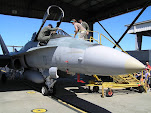Even having some liquid nails doesn't make a sound structure. You need proper material for that, like concrete, steel, wood. Even the new Boeing aircraft are finding problems with their carbon structure (to make it lighter). Because modern fighters like the Hornets are using carbon fibre structures it is causing airframe weakness. In a fighter you want toughness, not weakness. Need I say more?
What happened to titanium? It is widely used and not just on the SR-71 Blackbirds which were innately tough.
We have been going downhill for years yet we fail to realize it. We stopped thinking big in the 1960s (and 50s) when some of the best ever fighters were designed and made. One last fighter which was recent was the F22 but is it made out of tough enough material?
If I was to make a true superiority fighter I would not make it politically correct. I would ensure its airframe is the toughest (prioritize toughness over fuel consumption and power to weight ratios) possible, its engines were the best in terms of the largest amount of power but would be fuel efficient but not too much so the engines can perform mega powerfully (what are jet fighters for???) . You want it to have reliability and easier maintenance and less parts but not sacrificing technology. If you had a fleet of 300 (or 400 fighters an optimum for Australia) fighters you would want them to have the highest level of serviceability so maintenance does not 'ground' them. Essentially an aircraft that does not require high levels of maintenance which enables them to be ready at a moments notice. Really this is about having more aircraft available at any one time than not, and reducing your cost.
If a part on an aircraft needs to be repaired or maintained just replace it and send the part to a workshop so the aircraft can 'stay in the air' longer.
Read Eric's blog on the super bug.
Friday, August 7, 2009
Subscribe to:
Posts (Atom)
